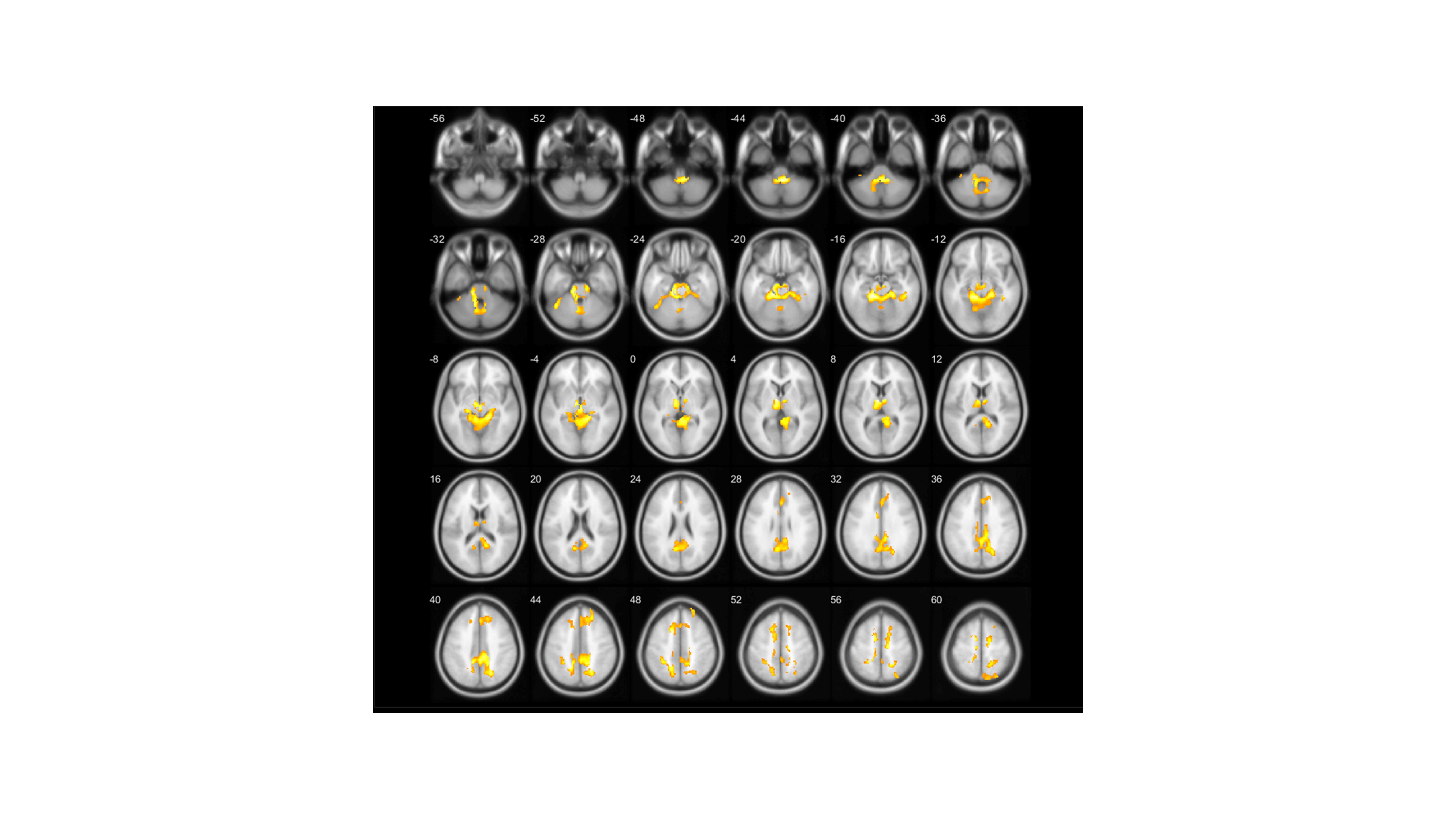Category: Parkinson's Disease: Neuroimaging
Objective: We aim to explore differences in brain cholinergic nerve terminal integrity between Parkinson’s disease (PD) patients with and without comorbid diabetes, utilizing a highly selective vesicular acetylcholine transporter radiotracer: Fluorine-18-fluoroethoxybenzovesamicol ([18F]FEOBV) PET.
Background: An established association between diabetes and PD exists, with diabetes appearing to correlate not only with increased risk but also more severe cognitive impairment. Insulin’s influence on cognition via central nervous system mechanisms has been suggested, yet the exact mechanism remains unclear. Given the significant role of cholinergic system impairment in PD cognition, it is plausible that diabetes may cause cholinergic vulnerability. However, studies investigating the impact of diabetes and topographic cholinergic vulnerability in PD are lacking.
Method: We enrolled 73 PD patients who underwent brain imaging with [18F]FEOBV PET, and for whom diabetes status was available. Among them, 17 out of 49 had clinically diagnosed diabetes. We conducted a whole brain voxel-wise t-sample t-test to compare [18F]FEOBV PET images between PD patients with and without diabetes using SMP12. The statistical threshold was set at p < 0.05, k > 100, with family-wise error (FWE) correction at the cluster level.
Results: Voxel-wise analyses revealed that PD patients with diabetes exhibited significantly lower cholinergic activity compared to PD patients without diabetes in one cluster, including the brainstem (upper medulla, pons & mesencephalon), bilateral thalamus, metathalamus (lateral and medial geniculate bodies), epithalamus, proximal, lingual gurys/optic radiation., vermis, anterior, posterior and retrosplenial cingulate (p < 0.05, K > 100, FWE corrected at the cluster level) [Figure 1].
Conclusion: These results suggest that diabetes is associated with lower cholinergic activity in brain regions that are potentially key factors for the cognitive network, such as the posterior and anterior cingulum, cerebellum and thalamus. This implies that the higher cognitive deficits observed in PD patients with diabetes may have the cholinergic system as a substrate, indicating that diabetic treatment (including dietary interventions) might serve as a potential treatment approach in PD as well.
Figure 1
To cite this abstract in AMA style:
G. Carli, P. Kanel, T. Brown, S. Roytman, R. Albin, N. Bohnen. Cholinergic brain vulnerabilities associate with diabetic comorbidity in Parkinson disease [abstract]. Mov Disord. 2024; 39 (suppl 1). https://www.mdsabstracts.org/abstract/cholinergic-brain-vulnerabilities-associate-with-diabetic-comorbidity-in-parkinson-disease/. Accessed October 16, 2025.« Back to 2024 International Congress
MDS Abstracts - https://www.mdsabstracts.org/abstract/cholinergic-brain-vulnerabilities-associate-with-diabetic-comorbidity-in-parkinson-disease/

